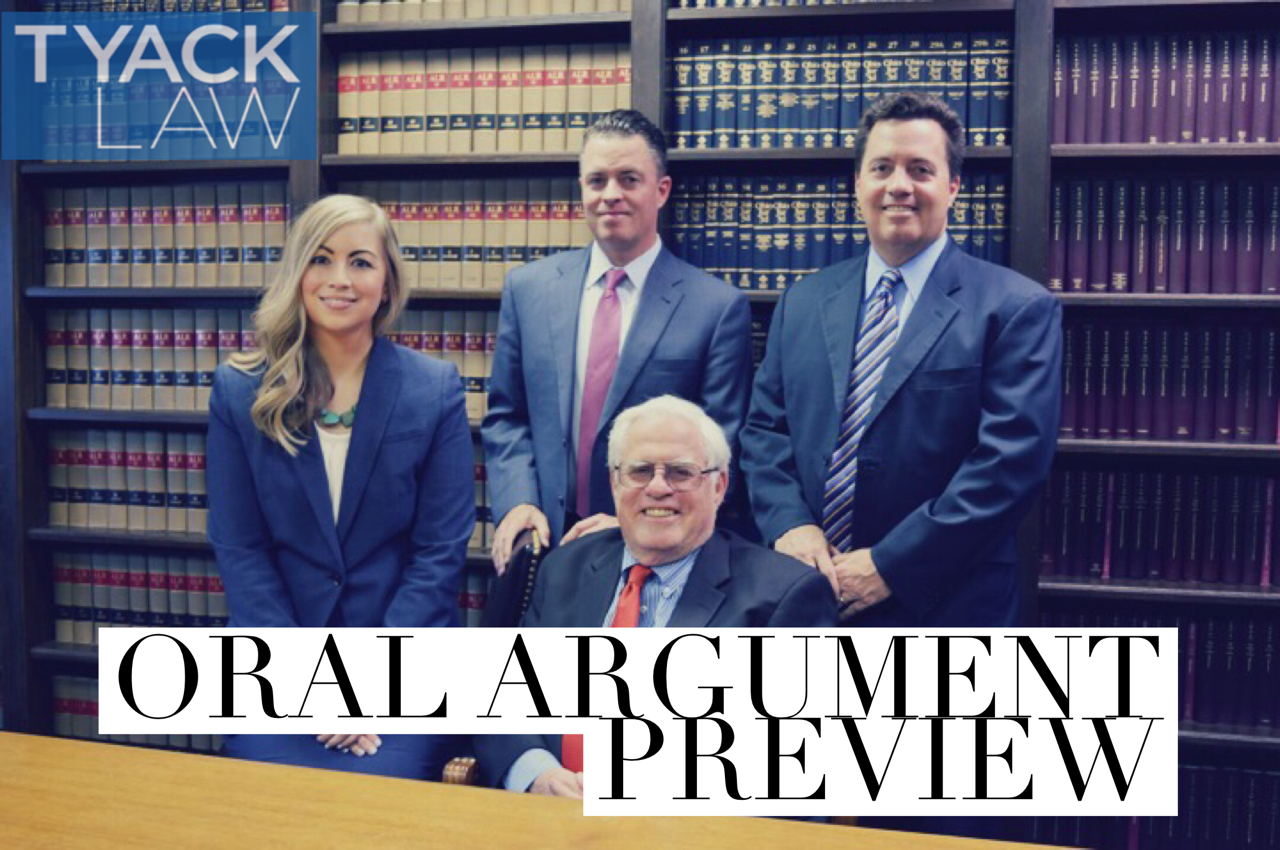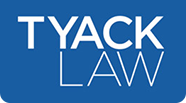
By: Holly Cline
On Wednesday, April 11, the Supreme Court of Ohio will consider in State v. Ireland (Case No. 2017-0344) whether a dissociative episode (commonly referred to as a “blackout”) caused by post-traumatic stress disorder (PTSD) is an affirmative defense that must be proven by a defendant by a preponderance of the evidence.
Factual Background
The Defendant, Darin Ireland, served in combat in the 1991 Persian Gulf and suffered from post-traumatic stress disorder (PTSD). Ireland and his friend, Tyler Thrash, were drinking at a bar with Ireland’s wife when another bar-goer, Drew Coen, allegedly grabbed Ireland’s wife’s buttocks on his way out of the Blacklick, Ohio bar. Thrash followed Coen out of the bar and physically attacked him. At some point after Thrash attacked Coen, Ireland found out that Coen had touched his wife inappropriately. Ireland did not recall attacking Coen, but witnesses testified that they saw Ireland punch and kick Coen multiple times while Coen was unconscious and not moving. The bar owner testified that although Ireland had a few drinks before the incident, that he had spoken with Ireland shortly before the incident and did not believe Ireland to be drunk.
Ireland was indicted in the Franklin County Court of Common Pleas several months later for felonious assault. At the jury trial, a psychologist testified on Ireland’s behalf that, in his or her professional opinion, Ireland experienced a dissociative episode (in other words, he blacked out), caused by his PTSD, when he attacked Coen. The psychologist for the State—although acknowledging that he did not interview Ireland and could not, therefore, diagnose him—testified to his belief that the evidence supported substance abuse, and not PTSD, playing a role in the assault.
Ireland’s attorney requested that the trial court give the jury an instruction on the defense of “blackout,” as set forth in Ohio Jury Instruction CR 417.07. OJI 417.07 reflects that the State bears the burden of persuasion with respect to evidence that the accused was “unconscious” at the time of the act. OJI 417.07, as it appears in the Ohio Jury Instruction manual, reads:
(1) DEFINED. Where a person commits an act while unconscious as in a (coma) (blackout) (convulsion) due to (heart failure) (disease) (sleep) (injury), such act is not a criminal offense even though it would be a crime if such act were the product of a person’s (will) (volition).
(2) CONCLUSION. If you have a reasonable doubt whether the defendant was conscious at the time of such act, you must find that he is not guilty. If you find that the defendant was conscious, such finding does not relieve the state of its burden of establishing by the required weight of the testimony (all elements of the crime charged) (any lesser included offense) [that the act was (purposely) (knowingly) committed
[COMMENT: Use above with appropriate instruction on purpose or knowledge. This instruction would not apply to one who recklessly or negligently became intoxicated or drove a car while sleepy.]
(3) STATUTE. Reflexes, convulsions, body movements during unconsciousness or sleep, and body movements that are not otherwise a product of the actor’s (will) (volition), are involuntary acts. R.C. 2901.21(C)(2).[1]
Ireland requested the following variation of OJI 417.07:
BLACKOUT: Where a person commits an act while unconscious as in a blackout due to disease or injury, such an act is not a criminal offense even though it would be a crime if such act were the product of a person’s volition. If you have a reasonable doubt whether the defendant was conscious at the time of such act, you must find that he is not guilty. If you find that the defendant was conscious, such finding does not relieve the state of its burden of establishing by the required weight of the testimony that the act was knowingly committed.
The prosecutor objected to both OJI 417.07 and Ireland’s suggested variation, arguing in the alternative that if the judge gave OJI 417.07, then the judge should instruct the jury that “blackout” (or “unconsciousness” or “automatism”) is an affirmative defense, which would shift the burden of proof regarding whether a blackout did, in fact, occur on Ireland. The trial court gave the following jury instruction at Ireland’s trial:
The defendant is asserting an affirmative defense known as blackout.
The burden of going forward with the evidence of blackout and the burden of proving an affirmative defense are upon the defendant. He must establish such a defense by a preponderance of the evidence. * * *
If the defendant fails to establish the defense of blackout, the state still must prove to you beyond a reasonable doubt all the elements of the crime charged.
Where a person commits an act while unconscious as in a coma, blackout, or convulsion due to heart failure, disease, sleep, or injury, such act is not a criminal offense even though it would be a crime if such act were the product of a person’s will or volition.
If you have a reasonable doubt whether the defendant was conscious at the time of such act, you must find that he is not guilty. If you find that the defendant was conscious, such finding does not relieve the state of its burden of establishing by the required weight of the testimony that the act was knowingly committed.
The trial court further noted in its instruction that the blackout instruction did not apply to a person “who recklessly or negligently became intoxicated.”
The jury convicted Ireland of felonious assault, and the trial court sentenced him to six years in prison and three years of mandatory post-release control.
Ireland appealed his conviction to the Tenth District Court of Appeals, arguing (in part) that the trial court erroneously instructed the jury that the “blackout defense” was an affirmative defense that placed the burden of proof on Ireland to show hat he acted involuntarily when he assaulted Coen. Agreeing with Ireland, the Tenth District reversed the trial court’s decision, limiting its ruling to claims of involuntary acts resulting from PTSD-induced blackouts.
The Franklin County Prosecutor’s Office appealed the appellate court’s decision to the Supreme Court of Ohio, which is scheduled to be heard on April 11th at a special off-site session of the Court in Putnam County.
Relevant Legal Background and Analysis
All offenses in Ohio require a “voluntary act” (actus reus). All offenses in Ohio—other than “strict liability” offenses—require a “culpable mental state” (mens rea). These two elements are set forth in R.C. 2901.21, which provides that a person is not guilty of an offense unless: (1) that person’s liability is based on conduct that includes either a voluntary act, or an omission to perform an act or duty that the person is capable of performing [i.e., the actus reus); and (2) that the person has the requisite degree of culpability for each element as to which a culpable mental state is specified by the language defining the offense [i.e., the mens rea].
Under Ohio law, a person commits felonious assault when they knowingly causing serious physical harm to another.[2] Thus, the culpable mental state for felonious assault is “knowingly.” A person acts “knowingly, regardless of purpose, when the person is aware that the person's conduct will probably cause a certain result or will probably be of a certain nature.”[3]
“[T]he Due Process Clause protects the accused against conviction except upon proof beyond a reasonable doubt of every fact necessary to constitute the crime with which he is charged.”[4] This constitutional protection is codified in R.C. 2901.05(A), which provides: “Every person accused of an offense is presumed innocent until proven guilty beyond a reasonable doubt, and the burden of proof for all elements of the offense is upon the prosecution.”[5]
R.C. 2901.05(A) provides that the State bears the burden of production and the burden of persuasion beyond a reasonable doubt with respect to every element of the offense, while the accused bears the burden of production and the burden of persuasion by the preponderance of the evidence with respect to every affirmative defense.[6]
R.C. 2901.05(D)(1)(a) and (b), respectively, define two categories of affirmative defenses: defenses expressly designated as affirmative and defenses “involving an excuse or justification peculiarly within the knowledge of the accused, on which the accused can fairly be required to adduce supporting evidence.” The State acknowledged “automatism” has not been expressly designated as an affirmative defense by the Ohio legislature; thus, its argument revolved around the theory that automatism (or “blackout”) is an affirmative defense under the “excuse or justification” subpart of R.C. 2901.05.
State’s Argument: Blackout or Automatism is an Affirmative Defense
In its brief, the prosecutor argued that “[t]he defense of blackout or automatism is an affirmative defense that must be proven by a defendant by a preponderance of the evidence, because it involves
an excuse or justification peculiarly within the knowledge of the accused, on which the accused can fairly be required to adduce supporting evidence.”
In other words, according to the State, while it bears the burden of proving that the defendant knowingly caused physical harm to another, it is not required to prove the negative—that the defendant was not in a blackout state. Instead, the prosecutor argues that Ireland’s blackout defense was an “excuse or justification” known only to Ireland such that it qualifies as an affirmative defense. Thus, the State argues, Ireland was required to prove by a preponderance of the evidence that he was in a blackout state, which caused him to act involuntarily when he attacked Coen.
Defendant-Appellee’s Argument: State Must Prove Crime Was Voluntary Act
In contrast, Ireland argued in his brief that (1) automatistic dissociation can cause a person to act such that the act is not “voluntary” within the meaning of R.C. 2901.21(A)(1); and (2) in determining whether the State met its burden of proving beyond a reasonable doubt that an act was “voluntary” within the meaning of R.C. 2901.21(A)(1), the factfinder may consider evidence of automatism.
Simply put, Ireland argues that the “voluntary” element of the felonious assault crime cannot be proven when someone is in a blackout state. Since a blackout or automatism state-of-being by its very essence negate the “voluntary element” of the offense, the blackout or automatism defense cannot be an affirmative defense under the “excuse or justification” sub-part of R.C. 2901.05. In other words, because Ohio law makes a voluntary act a necessary element of every criminal offense, Ireland argues that the defendant should not be required to offer evidence to support the claim that she or he acted involuntarily.
Ireland further argued that even if the Ohio Supreme Court rules that the affirmative defense instruction accurately characterized Ohio law, then the Court should still affirm the appellate court’s decision reversing the lower court’s conviction based upon one of the following constitutional grounds: (1) The Due Process Clause is violated by Ohio’s making a “voluntary” act an element of felonious assault while also imposing a presumption that every act is voluntary. (2) The Eighth Amendment bars criminal punishment for an automatistic act. (3) Either of the foregoing grounds, but under the Ohio Constitution: the Due Course of Law Clause of Article I, Section 16, and the Cruel and Unusual Punishment Clause of Article I, Section 9.
[1] R.C. 2901.21(C)(2) was renumbered (F)(2) effective March 23, 2015 by S.B. 361, 130th General Assembly.
[2] R.C. 2903.11.
[3] R.C. 2901.22(B).
[4] Patterson v. New York, 432 U.S. 197, 204 (1977) (citation omitted).
[5] State v. Nucklos, 121 Ohio St.3d 332, 2009-Ohio-792, ¶ 6.
[6] See, e.g., Chari v. Vore, 91 Ohio St.3d 323, 326, 2001-Ohio-49; Director, Office of Workers’ Compensation Programs v. Greenwich Collieries, 512 U.S. 267, 272 (1994).
Talk with an experienced lawyer today.
Fill out the form below to get started with your case evaluation.















